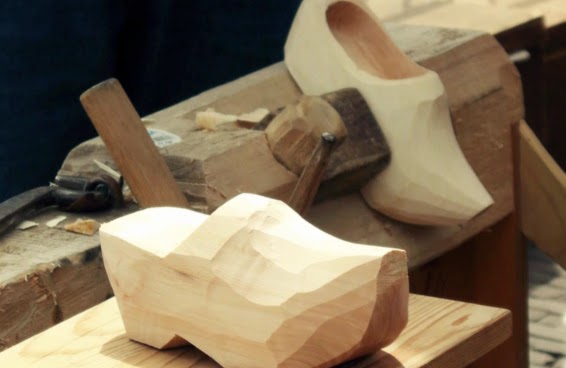
Clogs can be traced back as far as 1367 and it is most likely they originated much earlier. Today they are still worn as daily footwear. During the wet and cold periods on the farms in the Netherlands, clogs keep feet dry. Modern replicas of the iconic shape are made in rubber for rainwear and in warm fabrics for slippers. Colours have also changed from basic yellow with red trimmings to street scenes, flowers, blue and white, polka dots and cow patterns.
For the fabrication of clogs, the white Popular tree is used that are specially grown for this purpose of clog making. For the perfect pair of clogs, fresh wet wood is then cut into square blocks, carved and then smoothed into the right shape.

In the past, the smelter in IJmuiden supplied industrial clogs to the employees as safety gear, as it was the only footwear that could stand up to a splatter of red-hot molten metal without burning worker's feet. Custom made clogs were also produced in the days of dyke building to serve as fulcrums in lifting stones with crowbars. New techniques in dyke construction and the modernization of melting furnaces have meant these types of industrial clogs are obsolete and no longer produced.
Along with the traditional yellow with red clogs, villages were recognized by their individual unique colours and patterns.

Then there are the chip-carved bridal clogs, a genuine work of art, plain in colour with intricately carved designs. The suitor will present the pair to his loved one as a proposal of marriage; if she accepts them, she will wear them on their wedding day.

Today, the clog production in mainly for the tourist trade but there are still farmers who prefer the traditional clog to the more modern footwear and continue wearing them. The durability of these clogs can outlast their owners and the worn out ones turned into decorative flowerpots.


No comments:
Post a Comment